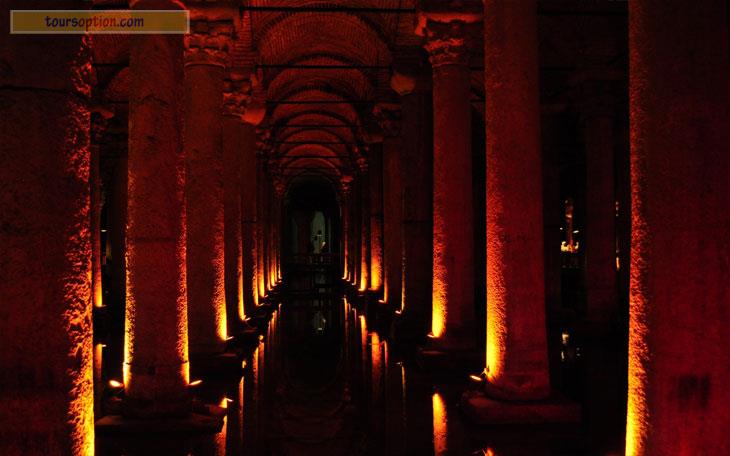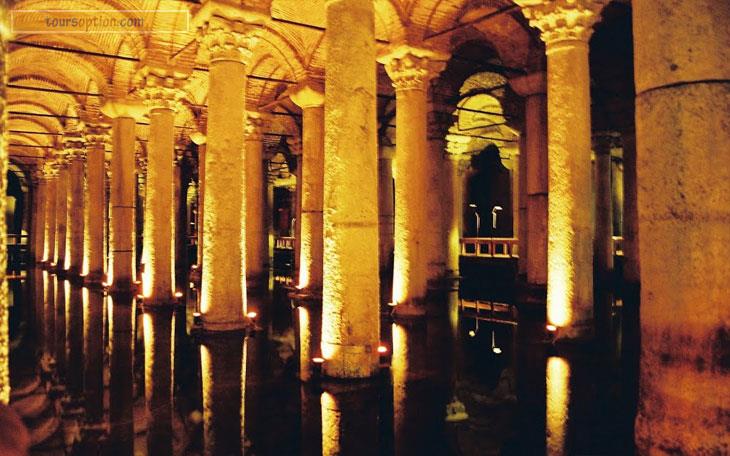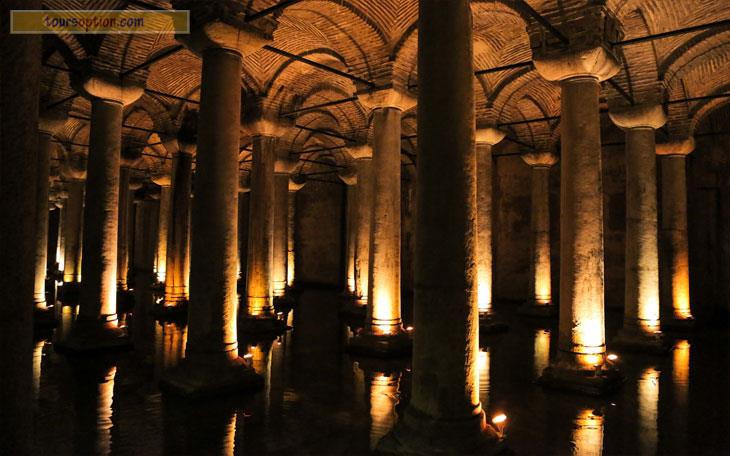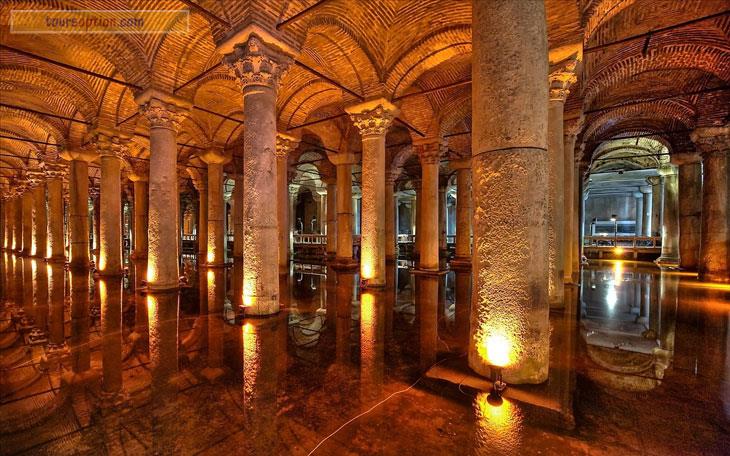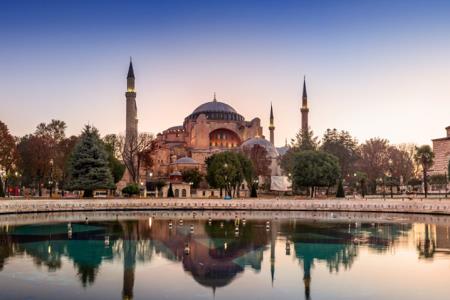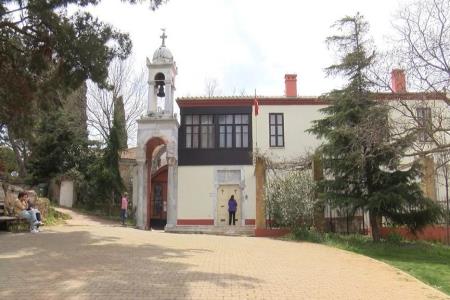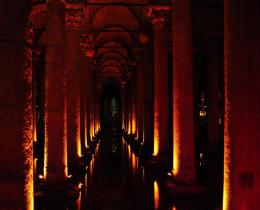Basilica Cistern (Yerebatan Sarnıcı)
Basilica Cistern (Yerebatan Sarnıcı)
The Basilica Cistern, is the largest of several hundred ancient cisterns that lie beneath the city of Istanbul, Turkey.
The Basilica Cistern, located in the crowded Eminönü district of Istanbul next to the Hagia Sophia, was built to provide water for the city of Istanbul during the reign of Emperor Justinian I in the 6th century CE. This cistern is an underground chamber of 138 x 64.6 metres. The large space is broken up by a forest of 336 marble columns, which are aesthetically supported by strong columns and arches. The ceiling vaults, known as Manastır Tonozu (cloister vault), are built without using a mould. The cistern is surrounded by a firebrick wall with a thickness of 3.5 meters and is coated with a special mortar to make it waterproof.
Originally, there was a stone-paved circle on the cistern. It was later broken by dense housing construction beginning in the Byzantine period continuing into the Ottoman period. The citizens who settled in the vicinity were provided with their daily water requirements from the large round well-like holes opening from the ceiling structure. In 1940, several of the structures built on and around the Basilica Cistern were nationalized and a neat building was constructed at the entrance of the Cistern by the Istanbul Metropolitan Municipality. It was also exposed to a wide range of cleaning process between 1985-1988. Thus dirty water and tons of mud were removed and a promenade platform was built in the cistern. After the cleaning process was completed, the two Medusa heads, masterpieces of the First Age Art of Statuary were used as pedestals at the bottom of the two columns in the northwest corner of the cistern. It is not known exactly when or for what purpose the were antique Medusa and Gorgon heads were brought to the Basilica Cistern.

 English
English Español
Español Deutsch
Deutsch عربي
عربي  Русский
Русский

